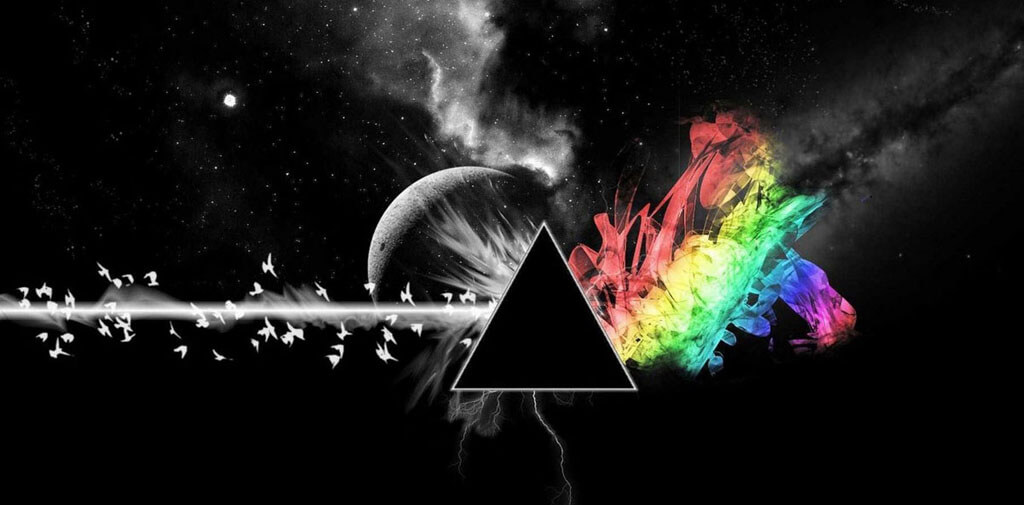ENGINEERING ‘DARK SIDE OF THE MOON’ (quick look)
Pink Floyd opted to record it at Abbey Road Studios in London, working with engineer Alan Parsons whose previous works included The Beatles’ Abbey Road and Let It Be. They chose the world-renowned studio, with some of the most advanced recording technology at the time – including the EMI TG12345 mixing console (able to work with up to 16 different tracks at once).
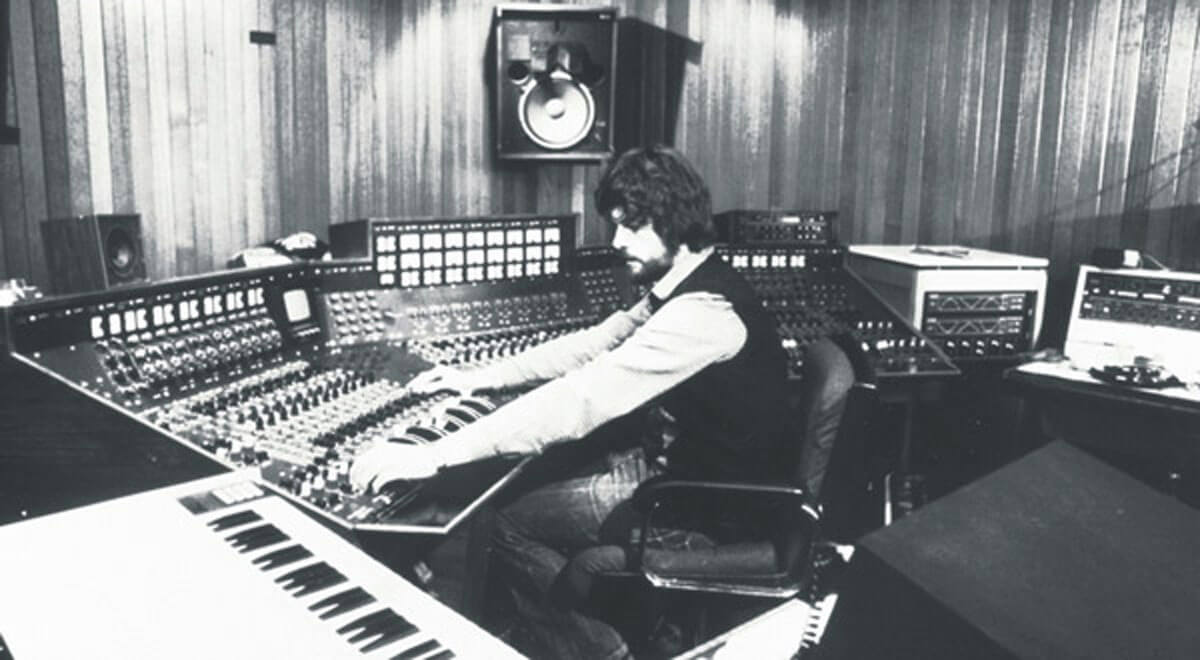
Parsons divulged what it was like working with Pink Floyd on Dark Side of the Moon:
“The band members were experienced in the studio. They arguably were the most technically minded band out there. They knew what a recording studio was capable of, and they took full advantage. And they worked me hard—they always worked their engineers hard to push the barriers.”
While the EMI TG12345 mixing console played an integral part in shaping the development of Dark Side, the EMS Synthi AKS was perhaps the most advanced piece of musical equipment featured on the album, and was best put to use on dystopian instrumental, On The Run. It was one of the first analog synthesisers to boast a built-in sequencer, allowing the user to input a pattern, alter the speed and fiddle with various parameters. Many of the sound effects such as the Doppler sirens and explosions scattered throughout Dark Side were created using the synthesiser. You could argue that without the AKS, Dark Side of the Moon would be a completely different beast altogether.
Another ground-breaking synthesiser for its time that was put to good use on the album was the EMS VCS-3. While used to piece together and process tape loops, the VCS-3’s rich, expansive sound quality was explored on several tracks (Any Colour You Like and Time).
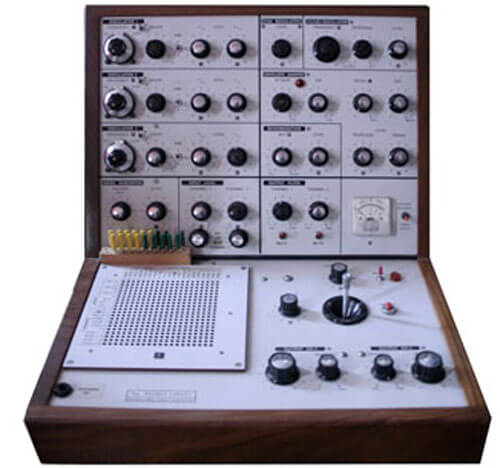
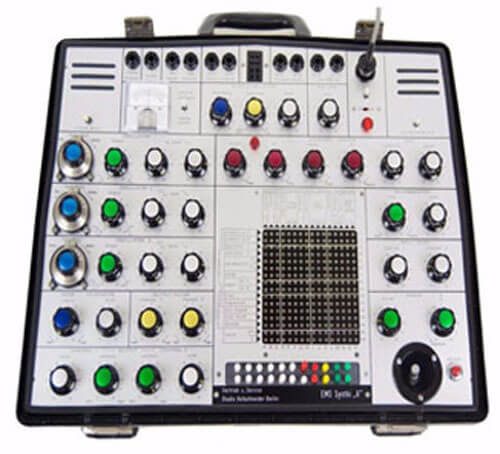
Experimental Loops and Collages
Roger Waters created the tape loop for the Money intro using a Revox A77 Tape Recorder. He recorded various samples, including coins clinking, paper tearing and a ringing cash register, then cut up the tape into seven sections of equal length. By splicing these pieces together, Waters created the infamous metronomic sequence that introduces the track and is known, still to this day, as one of the most innovative uses of tape loops.
Guitars
Utilising his 1969 Fender Stratocaster for the majority of the songs, David Gilmour also used a 1970 Strat for songs such as Brain Damage, as well as a custom Lewis guitar with twenty-four frets to achieve the high-pitched squalls of his double-tracked solo on Money.
Recording with a Neumann U87 (with the occasional use of a U86), Gilmour’s amp setup included a Hiwatt DR103 All Purpose 100W heads and a Leslie Speaker.
This amp made for him with “Pink Floyd” engraved on the faceplate (all had AP in the serial number). These were modified so both the Normal and Brilliant channels were linked internally to the normal volume pot. The Brilliant volume pot was removed and the Normal inputs were taped over. David plugged into the High sensitivity Brilliant input. The Brilliant volume pot may have been replaced by a fixed value resistor, or completely bypassed.
He’s been linking the input channels together on these four-input amps. Linking two channels allows a parallel (not stacked) blend of both channels simultaneously. This causes no harm at all to the amp and allows for more more tonal options when both channels are running at the same time.
As for pedals, he utilised various reverb units as well as a Uni-Vibe, a Binson Echorec and an EMS Synthi Hi-Fli, utilised to create the twangy auto-wah on Any Colour You Like.
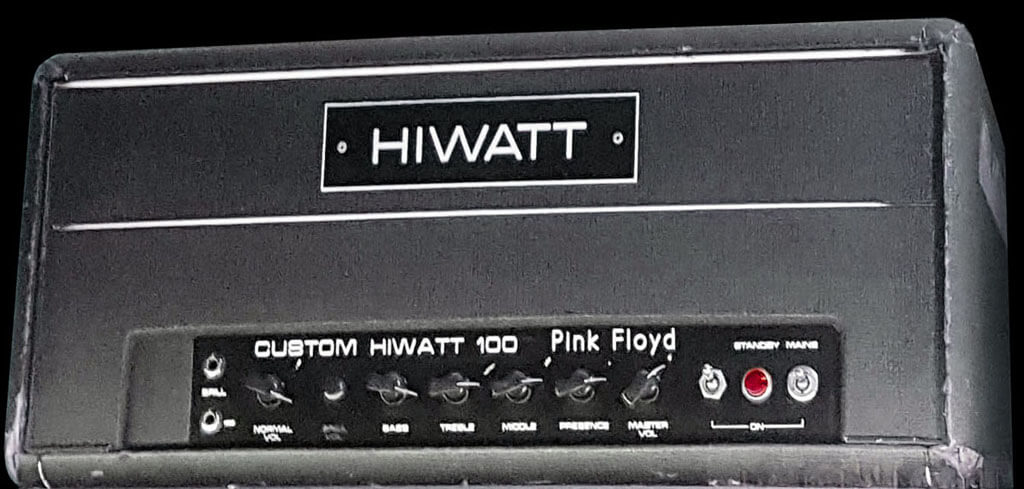
Keys
Richard Wright’s keyboard arsenal greatly expanded as the recording progressed. Aside from VCS-3, he also added a Wurlitzer run through a wah-pedal (Money). Wright also incorporated Minimoogs throughout the album, a Fender Rhodes in Breathe and a Hammond organ for the dramatic closing track, Eclipse.
Drums
Dark Side of the Moon is also defined by Nick Mason’s standout drumming, with his seven-piece Ludwig kit featuring little to no compression applied (!), resulting in an airy, natural quality.
Bass
Finally, Roger Waters’ bass set was pretty straightforward – a Fender Precision Bass with a Charvel maple neck and a set of Kluson tuners.
Vocals
Much like Gilmour’s guitar solos, many of the vocals throughout Dark Side of the Moon were double-tracked for a fuller, richer sound. Gilmour, Wright and Waters recorded their harmonising vocals into a Neumann U47 for the majority of their vocal takes. Many of the vocals throughout the album were heavily treated with reverb and delay – in fact, Parsons would have up to five or six different tape machines going on at one time.
* The album won only one Grammy award – and not for the music! It won ‘Best Engineered Album, Non-Classical’ and the award was collected by Alan Parsons.
* Dark Side Of The Moon hit number 1 only for a week when it launched, but went on to become one of the best-selling albums of all time, setting a Guinness World Record for the longest stay in America’s Billboard album chart, where it remained for 15 years, from 1973 until 1988.
* It is claimed that one in 12 people on Earth own or have owned the album! The ultimate prog rock album’s pioneering studio techniques changed the way music was recorded and paved the way for the waves of electronic music that followed.
* Clare Torry, who performed the wordless wail that runs through ’The Great Gig In The Sky’, was only paid £30 as a session singer at the time.
